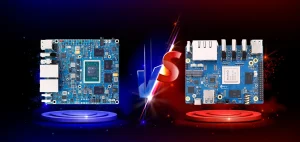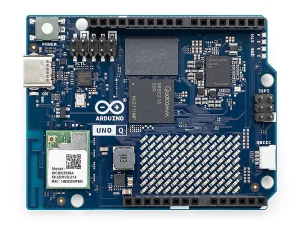
This project utilizes MQ-series gas sensors (such as MQ-2, MQ-7, or MQ-9) to detect various combustible and toxic gases like LPG, methane, carbon monoxide (CO), and smoke. Additionally, a flame sensor is merged to identify the presence of fire by detecting infrared (IR) radiation emitted by flames. The Arduino Nano continuously monitors the sensor readings and processes the data in real-time. When a hazardous condition is detected—such as an elevated gas concentration surpassing a predefined safety threshold or the presence of flames—the system triggers a multi-layered alert mechanism.
Gas leak detector with Arduino nano includes activating a buzzer for an audible warning, illuminating LED indicators to provide a visual hazard level indication, and—if the danger persists—engaging a relay module to automatically shut off the gas supply valve. This immediate response minimizes risks associated with gas leaks and fires, preventing potential explosions or poisoning incidents. For enhanced safety, an LCD display can be integrated to show real-time gas levels, and the system can be expanded with a GSM module to send emergency alerts via SMS.
Fire and Gas Leak Detection System Components Required
- Arduino Nano
- MQ-2 or MQ-5 Gas Sensor (Detects LPG, Methane, and Smoke)
- MQ-7 or MQ-9 Gas Sensor (Detects Carbon Monoxide – CO)
- Flame Sensor (Detects Fire)
- Buzzer (For audible alarm)
- LED Indicators (Red, Green, Yellow)
- 16×2 LCD Display (Optional – for real-time gas concentration display)
- Relay Module (To shut off gas supply valve in case of leaks)
- 5V Power Supply & Connecting Wires 🛒 To purchase the required parts, simply click on them.
MQ gas sensors belong to a family of sensors designed to detect a broad range of gases, including alcohol, smoke, methane, LPG, hydrogen, NH3, benzene, CO and propane. These sensors consist of an electrode coated with a sensing material, which is heated to enhance its reactivity and sensitivity.
⚠️Note:
The sensors used in this Gas Leak Detection Project have certain limitations, which should be carefully considered when selecting them and configuring their values in the Arduino IDE codes.
- MQ sensors are not highly selective. For example, the MQ2 sensor can detect LPG, propane, and smoke, but it cannot distinguish between them.
- Temperature and humidity can affect the sensor’s readings, leading to inaccuracies if not compensated for.
- MQ sensors require a warm-up period (typically 24-48 hours) to stabilize and provide accurate readings. This is due to the heating element inside the sensor.
- The heating element and sensing material degrade over time, reducing the sensor’s accuracy and lifespan (typically 1-3 years, depending on usage).
- The heating element consumes significant power, making MQ sensors less suitable for battery-operated or low-power applications.
- They may also need periodic recalibration to maintain accuracy, especially if used in environments with fluctuating temperature or humidity.
Fire and Gas Leak Detection System Wiring Connections
Gas Sensors (MQ-2 & MQ-7)
- VCC → 5V
- GND → GND
- AO (Analog Output) → A0 (Arduino for MQ-2), A1 (Arduino for MQ-7)
Flame Sensor
- VCC → 5V
- GND → GND
- DO (Digital Output) → D3 (Arduino)
Buzzer
- +ve → D6 (Arduino)
- -ve → GND
LED Indicators
- Green LED (Safe) → D8
- Yellow LED (Warning – Low Gas Level) → D9
- Red LED (Danger – High Gas Level or Fire Detected) → D10
Relay Module (For Gas Shutoff)
- VCC → 5V
- GND → GND
- IN (Signal) → D7 (Arduino)

Arduino Code
|
|
How Gas leak detector with Arduino nano Works:
🔥Flame Detection:
If a fire is detected by smart smoke detector, the buzzer activates and the relay shuts off gas flow to prevent explosions.
💨Gas & CO Detection:
The MQ-series gas sensor continuously monitors the air for the presence of hazardous gases. When gas concentration exceeds a predefined threshold (set in the Arduino code), the sensor sends an analog signal to the Arduino Nano.
The flame sensor detects IR radiation from flames. When a flame is detected, the smart smoke detector sends a digital signal (HIGH) to the Arduino Nano.
The Arduino processes this signal and triggers the buzzer and relay module. the relay shut off the gas supply valve, preventing the fire from escalating.
Safe (Green LED ON): Gas levels are normal.
Warning (Yellow LED ON): Gas is detected but not at dangerous levels.
Danger (Red LED + Buzzer ON + Gas Valve Shutoff): Gas/CO is too high, an alarm is triggered, and the relay turns off the gas supply.
Advantages of the Fire and Gas Leak Detection System:
Real-Time Monitoring: Continuously checks for gas leaks and fire.
Quick Response: Immediate alarm and gas valve shutdown prevent accidents.
Automation: Reduces human intervention, ensuring faster and more reliable safety measures.
Customizable: Thresholds and components can be adjusted for specific applications (home, industry, etc.).
Smart smoke detector Enhancements & Future Upgrades:
✅ SMS Alert System: Add a GSM Module (SIM800L) to send alerts when danger is detected.
✅ Backup Battery: Ensure it runs even during power cuts.
✅ IoT Connectivity: Use Cloud that is embedded with sensors, software, and network connectivity, allowing them to collect and share data.
Conclusion
This project is ideal for residential homes, industrial plants, commercial kitchens, gas stations, and laboratories, where early gas leak detection is crucial. With its scalability, this system can be expanded to include Wi-Fi/GSM modules for mobile alerts, battery backups for power outages, and advanced AI-based predictive analysis. Whether for personal use or large-scale deployment, this Arduino-powered solution provides an efficient, smart, and proactive approach to fire and gas safety, making environments safer for everyone. 🚀🔥
FAQ:
- Can a gas leak detector be used for both home and industrial applications?
Yes! This system is versatile and scalable. It is suitable for home kitchens, factories, gas stations, hotels, and laboratories. In home use, it can provide an early warning to prevent gas poisoning or fire. In industrial environments, it can be expanded with multiple sensors, higher-powered alarms, and automated emergency shutdowns to enhance safety. - What are the benefits of using an Arduino-based gas leak detection system?
Affordable – Low-cost components make it budget-friendly.
Customizable – Can be upgraded with additional sensors, GSM alerts, and IoT integration.
Reliable – Real-time monitoring ensures early detection of hazardous gases.
Easy to Build – Open-source hardware makes it DIY-friendly with simple programming.
Energy Efficient – Low power consumption allows continuous operation.
See Also:









One Response